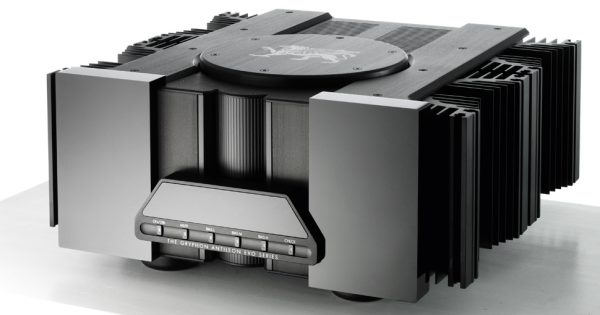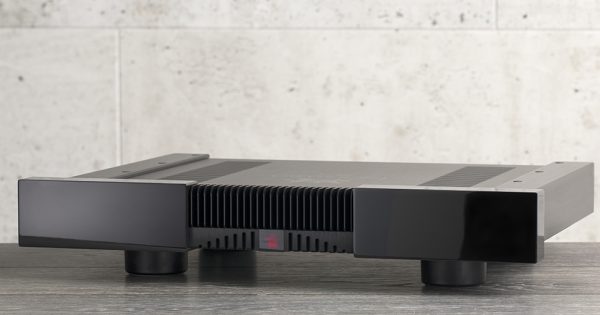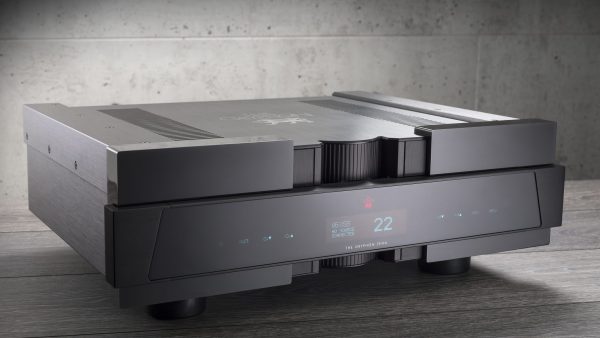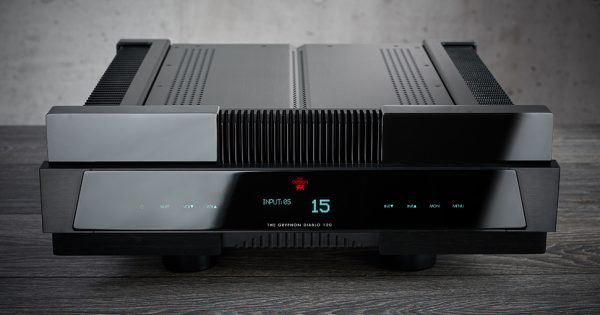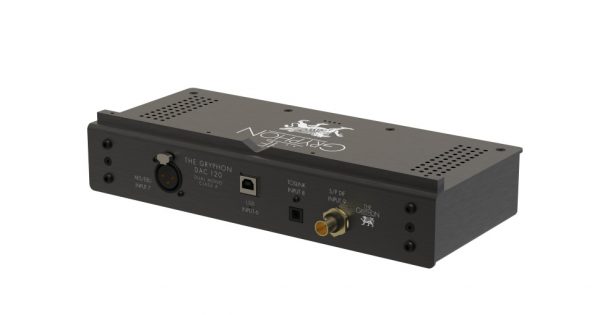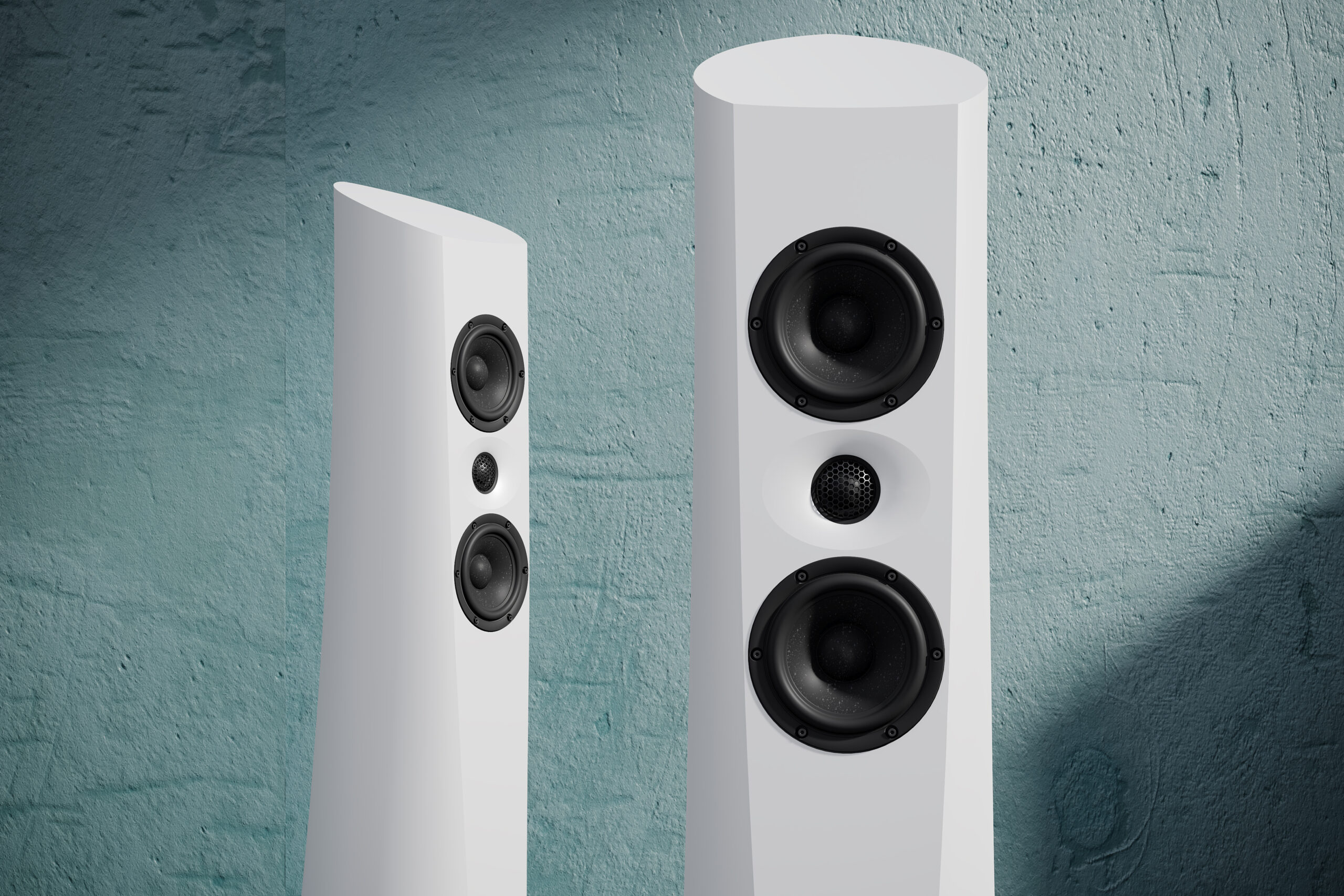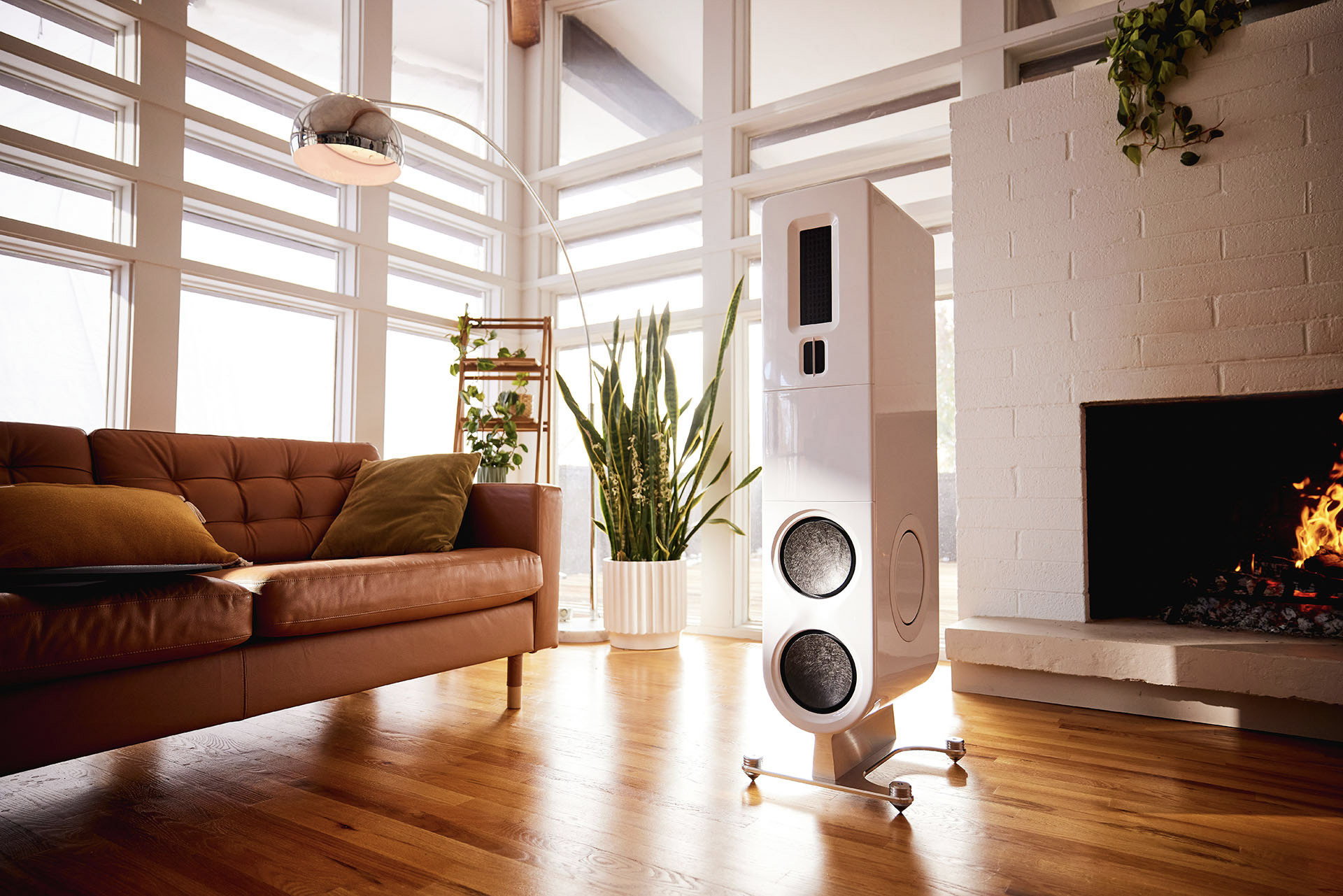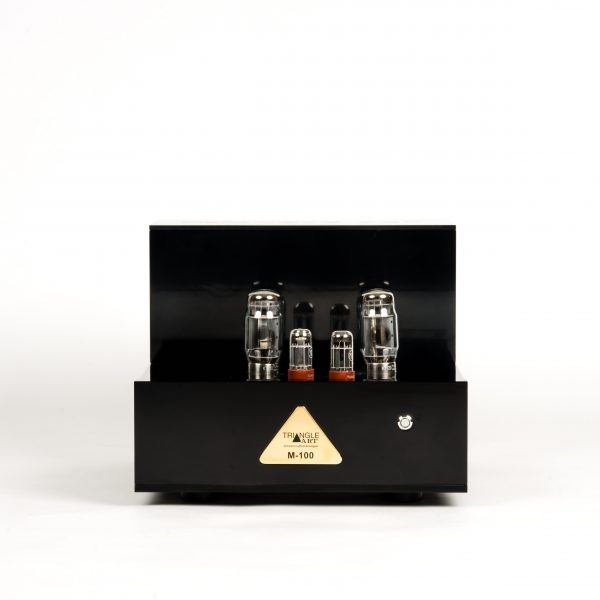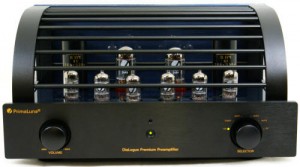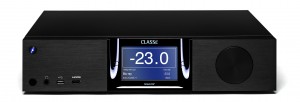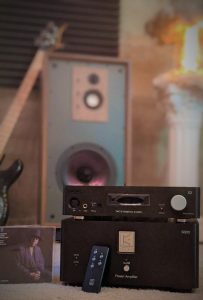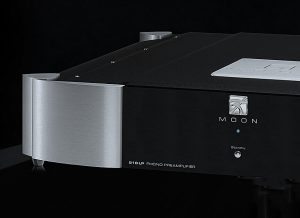Mythical Sound from the Winged Lion.
How many manufacturers offer fully designed turn-key systems? How many do it with the panache of Gryphon Audio of Denmark? The answer can fit on one hand if you were missing at least two fingers.
My first encounter with Danish designer Fleming Rasmussen's Gryphon Audio came with the review of the Gryphon Encore stereo amplifier, and Prelude preamplifier in 2004. In what seems to be another lifetime, the Encore displaced my Jeff Rowland 302 stereo amp as I fell for the spell cast by the Gryphon center of the earth weight, and warm slightly dark tonal balance. Back in 2004, amplifiers sounded very different from one another compared to the converging disparities found today. House sound was easily identifiable and went a long way in defining the musical priorities of the designers. I have spoken with many reviewers on this very topic, off the record of course, but those I have cornered admit it is getting tougher and tougher to parse the differences between modern amplifiers and preamplifiers.
But something kind of rattled this hypothesis while visiting Joe Cali's Gryphon Showroom, inhabiting a fair amount of floor space at retailer Stereo Exchange in Union Square, lower Manhattan. With the latest Antileon EVO stereo amplifier ($39,000) being fed from the pre-out of the Diablo 300 integrated amplifier ($16,000), with DAC card ($6000) and internal phono card ($2250), with Scorpio CD player ($9400) feeding the Pantheon speakers ($52,000), I immediately recognized the Gryphon signature, but it was just so much better than I recall. It should not be news that Gryphon has improved over the 15 years since my reviews. Staring down the massive Antileon EVO stereo amplifier, lashed to the Pantheon speakers, I would expect a great showing. But the sound wasn't just better, it was Gryphon better. All the traits that separates Gryphon from the pack are there in spades. To my ears, Gryphon has a way of reproducing the lower midrange and upper bass with exceptional power control and color. To me, so much of the music lives in this area both intellectually and within the range of emotion. I don't want to give the impression this is the only strength of the presentation, image dimension, and presence is outstanding as well, but it is an area that distinguishes Gryphon from so many other manufacturers. I can describe the sound as slightly "bottom up" in orientation. From a foundation of well resolved and controlled bass dynamics flowing into the lower midrange supporting the upper midrange and treble, the tonal balance is simply more like what I hear in live music. Where the major improvement shines to my ears, it is in the upper mid band and high frequencies. Gryphon has eradicated to a large degree the slight darkness and lack of resolution of the older designs. There is nothing dark in the pejorative sense at all about the sound. The question would be, how would they work in my home?
I did not let Joe Cali off the hook after he casually mentioned the possibility of a stint with the Antileon EVO amplifier and Sonett phono stage. Within a few weeks both products were delivered, if even for a contracted period of time. Despite the short stay, I was able to easily discern the unique qualities of these outstanding products.
Starting with the dual mono single chassis Antileon EVO stereo amplifier, it employs two power chords in true dual mono style. Rated at 150 class A watts set at its at its highest bias, which can be selected from a range of four bias levels via front panel buttons (or with a Gryphon preamplifier automatically changed via the Green cable connection based on volume level), the sense of authority at its "hottest" bias proves that 150 watts can be simply astounding. The level of bass control and transparency is stunning. When the bass pounded, man you felt it and could easily discern the unique shapes and contours of instruments sounds all the way down.
Images were full scale, stable, and unwavering regardless of the level of playback. Compared to the Pass Labs XA200.8 mono amplifiers I reviewed last year, the Gryphon provided a weightier foundation. The Pass amplifiers were fleet of foot and airier down the range. Both amplifiers provided absolutely unwavering control and stability. The Antileon provides great color saturation through the mid band, with slightly darker hues than the sunnier Pass Labs. The Gryphon inspires "sonic lust." There is something deeply seductive and addictive about the sound. It tugs at the heart strings while tickling the intellect. If I had to flip a coin between the airy, neutral/grainless coherent powerful Pass monos and the Lusty bolder Gryphon, I'd be thrilled no matter the outcome. The Gryphon Antileon EVO in person is visually arresting. Until you see it up close, you don't get a sense of how massive and sculpted it is. The top circular plate sports an etched Gryphon logo that, quite frankly, is straight up bad ass.
As the Antileon was tearfully wheeled out of my loft, I was able to focus my attention on the Sonett phono stage thanks to importer Phillip O'Hanlon's good grace, extending my audition period by a few weeks. Still a short audition by typical review standards, I can safely draw several solid conclusions. First off, the Sonett, with its low slung profile and customary black acrylic end caps and the glowing red Gryphon logo, is again, very sexy. I would like a balanced in/out, but made the single ended operation work. Internal switches allow for a very wide range of loading options. My Ortofon MC Winfeld Ti cartridge strapped to the VPI Avenger Reference was connected via the stellar MIT Oracle MA-X phono cable, and in turn fed to the D'Agostino Momentum Preamp. The Pass Labs XA200.5 mono amps picked up the slack left by the departed Antileon EVO, and the speakers were my long term reference Lansche 4.1 and Sunny Cable H3W-15. All wire was MIT reference level.
To expect the phono stage would deviate from what we have identified as Gryphon's strengths would be a missing an easy layup. The Sonett possesses the weighty, powerful foundation of the Antileon EVO amplifier, as well as the lovely color and rock solid imaging. Transparency and silence was just that. The Sonett was silky quiet within my often noisy system. The PS Audio P20 power regenerators under review were extremely helpful in this area. I had just received the Boulder 508 phono stage, which is 30% cheaper than the Sonett, and is very compact and housed in a nicely finished solid aluminum casing, but makes far less visual an impression than the Gryphon. I won't go into too much of a direct comparison, as I have not spent enough time with the Boulder as of this writing. But it remains to be said, Gryphon is as Gryphon does. I loved the Sonett. Beautiful textures, delicate when needed, brutal when called upon, it really got out of the way of the delicate analog signal, gently kissing it with that bit of that Gryphon magic. If you value what Gryphon values, you will need look no further than the Sonett.
There is a loveliness to the sound of the Sonett. Upper frequencies posses a great amount of tonal color other designs seem to loose in the name of transparency. I wouldn't call it tubey, but it's not solid state in the negative sense of the word. The Sonett delivers a very fine level of detail but is not "vivid" in the way the Audio Research Ref 3 I briefly auditioned is. It's just a touch more rounded without sounding recessed or vague at all. At $7590 the Sonett faces some pretty decent competition, but my guess is many of the Sonetts sold will be nestled among other Gryphon components. It's certainly not the only way to enjoy the Sonett, it sure does make a lot of sense on its own. But why mess with a good thing? I'd gladly purchase an entire Gryphon system based on what I've heard at Stereo Exchange and in my own system.
A couple of months later I spent an evening with Joe and the new Zena preamplifier ($17,500) with DAC card ($6000). I also had in tow the MIT AC169 speaker wire and MA-X SHD balanced interconnects. We started off with Eva Cassidy's Live at Blues Alley, "Stormy Monday" (spun on a Brinkman table). We had auditioned this track in a previous session, and I'm very familiar with it. I've long been a been a believer in the power of the reference level MIT. Joe is a very well seasoned audiophile, he co-founded Cello Music and Film Systems with Mark Levinson, and is a recording engineer for his wife, singer and songwriter Lori Lieberman. He has been around the block in this industry. He is simply too experienced to be prone to hyperbole. A few notes into the track he looked at me, and I could see it written all over his face. The MIT added dimension, both in imaging, space, texture, color, and dynamics. It took already great sound and created one of the single best systems he, or I, had ever heard. Stevie Ray Vaughn and "Double Trouble" were in the room with us. By night's end we both were emotionally wrung out. In the end, I was left with a very unique impression. Sure the Gryphon system delivers the checklist of audiophile elements—imaging, depth of stage, space, dynamics, and outstanding timbre and detail. But what it does is takes all those elements, the sum of its parts, and delivers something very rare—the impression of real music making in real time. It projects a sense of "live" even in older recordings such as the Red Garland's On Green Dolphin Street. There is the distinct impression the music is being performed live, it's uncanny. Gryphon captures the "force" of live music, the intention and energy of the musicians engaging and the instruments to life. A time machine of sorts, transporting the room and musicians as they were performing at the time. The Gryphon gear has the resolving power revealing the recording venue, and the means by which the instruments were miked and recorded without getting bogged down in minute details taking over the show.
As if I hadn't been lucky enough, I was able to audition the Diablo 120 integrated amplifier ($9990)/DAC ($4250) at home. I was expecting a bit of a soft landing having just experienced the very best Gryphon has to offer. With the VPI Avenger Reference/Ortofon cartridge and Boulder 508 phono stage, I was floored by performance. The Diablo 120 is simply amazing for $9990. Jeff Beck's "Blow by Blow" sprang from the speakers with great definition and that "force" Gryphon injects into the dynamics that again makes the sound feel and sound live, and very engaging. And if you like to crank up the volume, those 120-watts will not let you down. No, it's not the Antileon EVO. It's not quite as refined. But the Diablo 120 is its own creation, and rests on its own merits. This is the kind of product I could easily live with forever, and never, well rarely, look back. After all, the big Gryphon system is kind of burned into my musical cortex. Even with that, the Diablo 120 really stepped up and caught me off guard. Along with those great dynamics comes a stage as wide and deep as I could have asked for. And that way Gryphon has with tonal color really completes the picture. For just a toe in the water of the five figure price pond, the Diablo is a great deal. If the great sound wasn't enough, I love the look and the interface of the Diablo. The touch screen front panel works flawlessly and the remote is populated with big red buttons, and is a breeze to use. It can be had with the DAC section or phono card, mine was configured with the DAC card. The McIntosh MB50 benefited greatly from the DAC section of the Diablo. For ($4250) the added upgrade is a steal.
To put this performance into some perspective, the Antileon and the Zena with Pantheons is really the entry level of Gryphon separates. The Colosseum amps ($49,000 stereo) and then the Mephisto amps ($61,000 stereo) are the next progression. Pandora Preamp ($32,500) and Legato Phono Preamp ($21,000) are above the Zena and Sonett, and then the Kalliope DAC ($25,000). Speakers go to the Trident II semi active ($150,000), and Kodo Reference with Active Bass ($390,000).
While Gryphon is not exactly a secret, it deserves far greater recognition in the States. Having so enjoyed this journey into the present world of now retired Flemming Rasmussen's legacy brand, I couldn't be more impressed. Joe Cali has done a terrific job here in NYC at Stereo Exchange setting up the system just perfectly. If you are anywhere near Manhattan, be sure to make an appointment and to spend some time in the hot seat. From what I've heard so far, I'm totally convinced Gryphon as a system, or in part, must be considered at the peak of high end performance.
Gryphon





